Hey there, shrimpfam! Ever found yourself staring at your vibrant Red Cherry Shrimp, wondering if they could share their home with the elegant Red Tail Shark? Imagine the dance of colors and the harmony of life, but then a sudden realization hits you. Can these two aquatic species coexist peacefully?, or is it a recipe for disaster?
It’s a question that has puzzled many shrimp keepers, and today, we’re diving into the depths to find the answer.
No, Red Tailed Sharks and Red Cherry Shrimp should not be kept together. The Red Tailed Sharks may view the shrimp as a tasty meal, leading to a tragic end for the shrimplets.
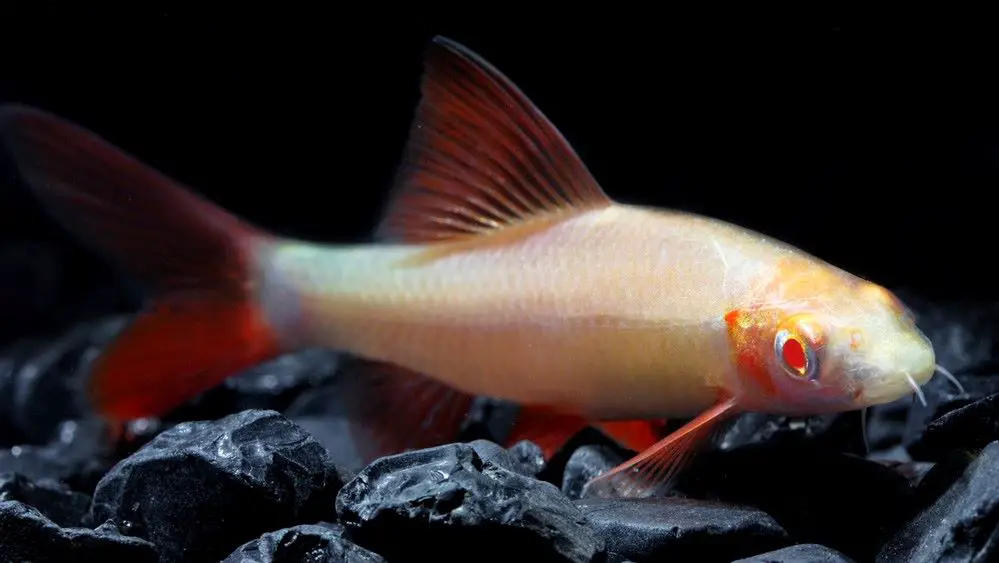
I remember the time when I first set up my shrimp tank, filled with excitement and anticipation. The vibrant colors of the Red Cherry Shrimp were mesmerizing, and the idea of adding a Red Tail Shark seemed like the perfect way to enhance the beauty of the tank. But as the days turned into weeks, I noticed something unsettling.
The Red Tail Shark was growing more aggressive, and the shrimplets seemed to be disappearing one by one. The harmony I had envisioned was turning into a nightmare. I researched, consulted with fellow shrimp keepers, and finally realized the harsh truth: Red Tailed Sharks and Red Cherry Shrimp were not meant to be tank mates.
It was a painful lesson, one that took time and effort to rectify. I had to find a new home for the Red Tail Shark and rebuild the shrimp population. The experience taught me the importance of understanding the compatibility of different species and the need to consider their natural behaviors and instincts.
The journey of keeping Red Cherry Shrimp and Red Tail Sharks together was filled with challenges, heartaches, and valuable lessons. It’s a topic that resonates with many shrimp keepers, and I hope that sharing my personal experience will help you make informed decisions for your tank.
In the following sections, we’ll explore the reasons behind the incompatibility of these species, delve into their natural behaviors, and provide alternative solutions for creating a harmonious aquatic environment. So grab your nets, fellow shrimp keepers, and let’s dive into this fascinating world of shrimp keeping.
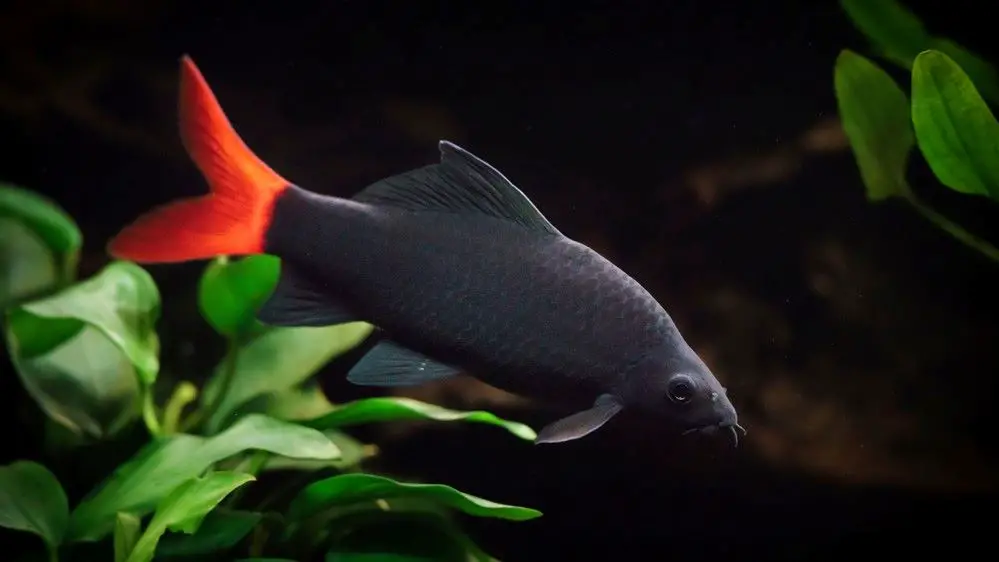
Why Can’t Red Tailed Sharks and Red Cherry Shrimp Coexist?
The coexistence of Red Tailed Sharks and Red Cherry Shrimp in the same aquarium is a complex issue that boils down to their natural behaviors, instincts, and compatibility.
Red Tailed Sharks are known for their territorial nature. They often claim a specific area within the tank and defend it aggressively against intruders. While they may not actively hunt the shrimp, their territorial behavior can lead to stress and anxiety among the shrimplets. The Red Cherry Shrimp, being small and delicate creatures, can easily become targets of this aggression, leading to a hostile environment.
On the other hand, Red Cherry Shrimp are peaceful and non-aggressive creatures that thrive in calm and stable environments. They require hiding spots and a gentle flow of water to feel safe and secure. The presence of a Red Tailed Shark can disrupt this tranquility, causing the shrimp to hide constantly and affecting their overall well-being.
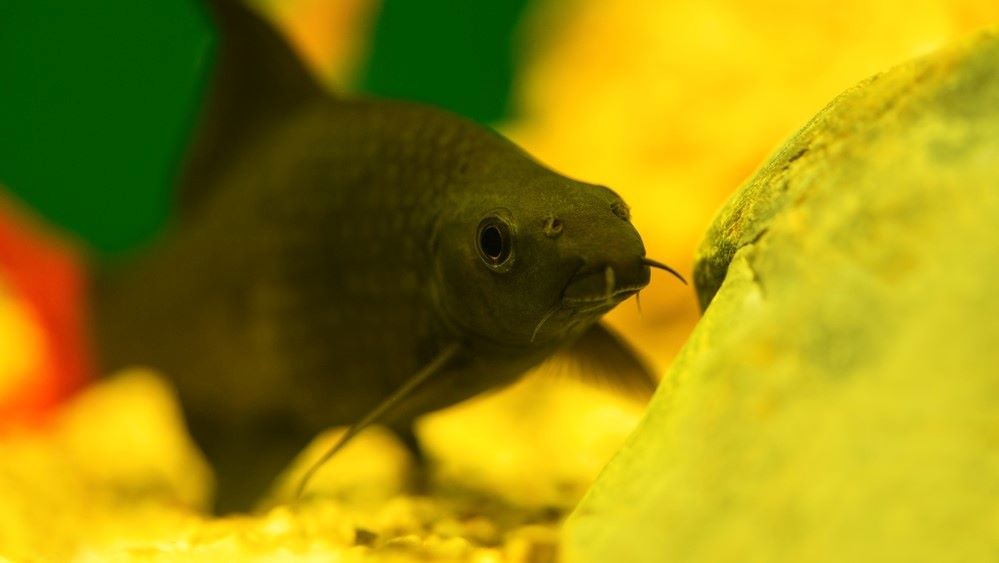
Additionally, the dietary preferences of Red Tailed Sharks may pose a risk to the shrimp. While they primarily feed on algae and plant matter, they are opportunistic feeders. If the shrimp are small enough, they may be seen as a potential food source, leading to predation.
The inability of Red Tailed Sharks and Red Cherry Shrimp to coexist stems from their contrasting behaviors, dietary preferences, and environmental needs. The aggressive nature of the Red Tailed Shark, coupled with the delicate and peaceful disposition of the Red Cherry Shrimp, creates a mismatch that can lead to stress, predation, and an overall unhealthy environment for both species.
It’s a combination that requires careful consideration and understanding of their unique characteristics to avoid potential conflicts and ensure the well-being of both aquatic inhabitants.
What Alternatives Are There for Keeping Red Tailed Sharks with Other Tank Mates?
Finding suitable tank mates for Red Tailed Sharks can be a rewarding yet challenging task. Their territorial nature and specific requirements mean that careful consideration must be given to selecting compatible species. Some alternatives can create a harmonious environment for Red Tailed Sharks.
Firstly, it’s essential to understand the Red Tailed Shark’s behavior. They are known to be territorial, especially as they mature. This means that providing ample space and hiding spots can reduce aggression and allow other fish to coexist peacefully.
When considering other fish species, it’s wise to look for those that are not too small or delicate, as they may become targets of the Red Tailed Shark’s aggression. Fish that occupy different water levels can be a good choice, as they are less likely to invade the Red Tailed Shark’s territory. For example, surface-dwelling fish like Gouramis or schooling fish like Tetras that swim in the middle layers of the tank can be suitable companions.

Another consideration is the water parameters and environmental needs. Red Tailed Sharks prefer slightly acidic to neutral water with a temperature range of 72-79°F (22-26°C). Choosing fish that thrive in similar conditions will ensure that all inhabitants are comfortable and healthy.
It’s also worth noting that Red Tailed Sharks are often more peaceful when kept singly. Introducing more than one Red Tailed Shark into the same tank can lead to fierce territorial battles. Therefore, keeping only one Red Tailed Shark per tank is advisable to minimize aggression.
In terms of non-fish companions, snails and larger, robust invertebrates may coexist with Red Tailed Sharks without significant issues. They are less likely to be seen as threats or food, allowing for a more diverse and engaging aquarium.
Lastly, the overall setup and design of the aquarium play a crucial role in maintaining peace. Providing plenty of hiding spots, caves, and dense vegetation can create natural boundaries and reduce conflicts. Regular monitoring and understanding the unique dynamics of your specific tank will also enable you to make adjustments as needed.
While Red Tailed Sharks may not be the easiest fish to pair with other tank mates, thoughtful selection and careful consideration of their behavior, environmental needs, and the overall aquarium setup can lead to a thriving and harmonious aquatic community. It’s a journey that requires patience, observation, and a willingness to learn and adapt to the specific needs of these fascinating creatures.
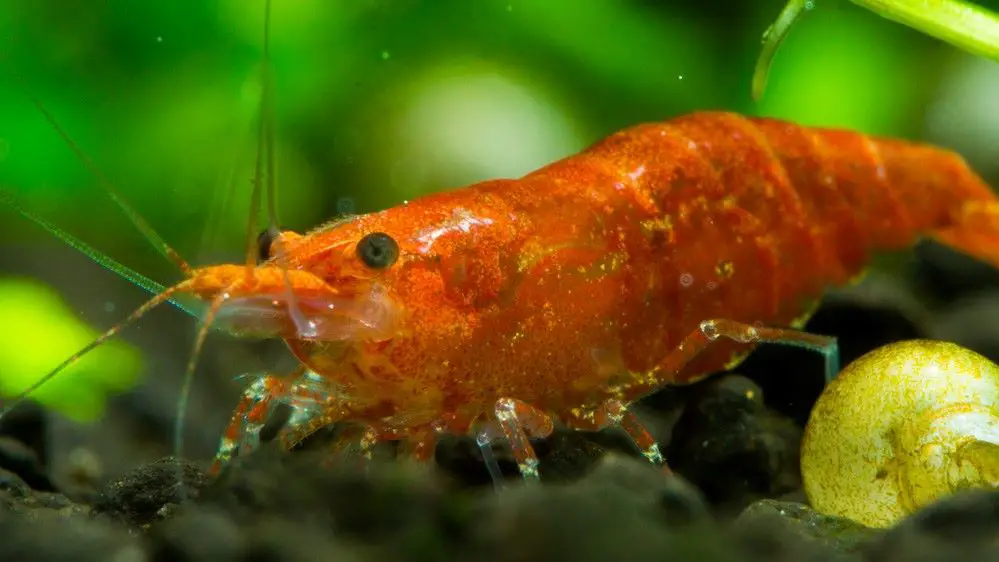
How Can You Create a Safe and Harmonious Environment for Red Cherry Shrimp?
Creating a safe and harmonious environment for Red Cherry Shrimp is a delightful endeavor that requires attention to their specific needs, preferences, and natural behaviors. Here’s how you can craft a haven for these charming aquatic creatures.
Red Cherry Shrimp thrive in stable water conditions. Maintaining a consistent temperature between 65-80°F (18-27°C) and a pH level of 6.5 to 8.0 is vital. Regular water testing and gentle adjustments can ensure that the water parameters remain within the desired range.
Shrimplets are peaceful and social creatures, so providing them with plenty of hiding spots is essential. Plants, driftwood, rocks, and specially designed shrimp caves can create a complex environment where they can explore, hide, and feel secure. Floating plants can also provide additional cover and create a more natural setting.
The substrate plays a significant role in the well-being of Red Cherry Shrimp. A dark-colored, fine-grained substrate not only enhances their vibrant color but also allows them to forage comfortably. They are natural scavengers, and a substrate rich in organic matter can provide them with a continuous source of food.
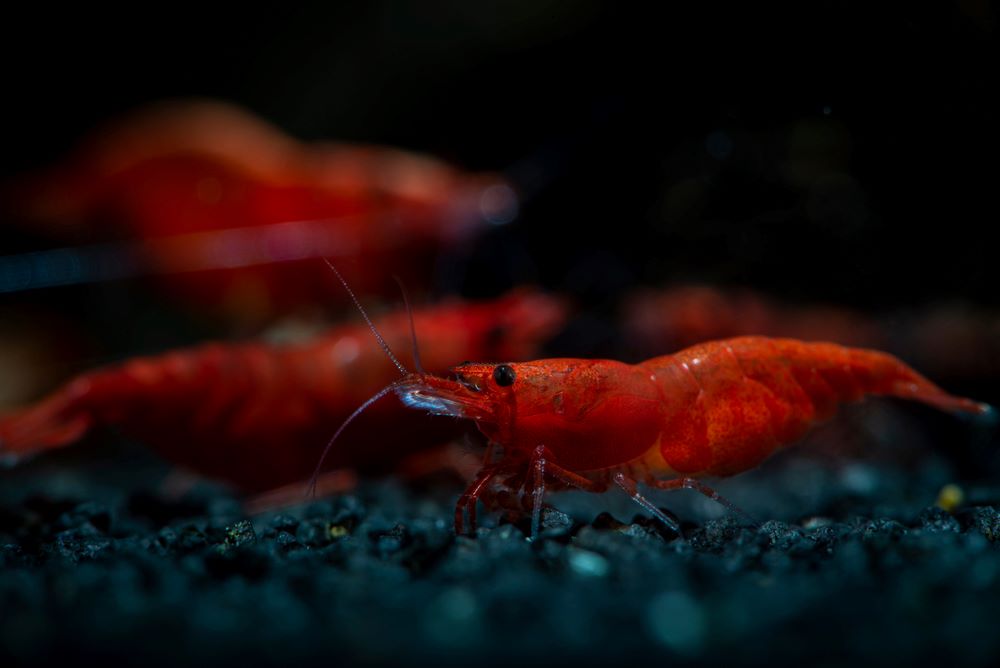
Speaking of food, a balanced diet is crucial for their health and vitality. While they will happily feed on algae and biofilm, supplementing their diet with specially formulated shrimp pellets, blanched vegetables, and occasional protein treats can ensure they receive all the necessary nutrients.
Water flow is another consideration. Red Cherry Shrimp prefer a gentle flow that allows them to swim and forage without being swept away. Sponge filters are an excellent choice, as they provide gentle filtration without posing a risk to the shrimp.
Avoiding harmful chemicals and substances is paramount. Copper-based medications, for example, can be lethal to shrimp. Always check the ingredients of any additives or treatments and consult with experts if in doubt.
Coexisting with other tank mates requires careful selection. Peaceful, non-aggressive fish that won’t see the shrimp as food can be suitable companions. Snails and other invertebrates can also add diversity and interest to the tank without posing a threat.

Regular monitoring, cleaning, and maintenance will ensure that the environment remains healthy and vibrant. Observing the shrimp’s behavior, molting patterns, and overall appearance can provide valuable insights into their well-being and alert you to any potential issues.
Creating a safe and harmonious environment for Red Cherry Shrimp is a rewarding journey that requires understanding, care, and a touch of creativity.
By considering their specific needs and crafting an environment that reflects their natural habitat, you can enjoy the captivating beauty and unique behaviors of these delightful creatures. Whether you are a seasoned shrimp keeper or just starting, the joy of watching them flourish and thrive in a well-designed tank is a pleasure that never ceases to enchant.
Conclusion: Creating a Harmonious Environment for Red Tailed Sharks and Red Cherry Shrimp
In summary, the journey of keeping Red Tailed Sharks and Red Cherry Shrimp, whether together or separately, is filled with considerations, challenges, and rewards. Understanding their unique behaviors, environmental needs, and compatibility is key to creating a thriving and harmonious aquatic environment.
While they may not be suitable tank mates, thoughtful planning and attention to detail can lead to a captivating and engaging aquarium reflecting these fascinating creatures’ natural beauty and diversity.
Please don’t hesitate to reach out if you need any help or have questions about your specific setup. If you can’t find me here, check out Aquarium Shrimp Keeping on Facebook, where a community of fellow shrimp enthusiasts is always ready to lend a hand.
Happy Shrimp and Shark Keeping, shrimpfam!
FAQ Section
Q. Can shrimp live with red tail shark?
A. No, shrimp, particularly small and delicate species like Red Cherry Shrimp, should not be kept with Red Tailed Sharks. The aggressive and territorial nature of the Red Tailed Sharks can lead to stress and potential predation of the shrimp.
Q. What can live with red tail shark?
A. Red Tailed Sharks can live with larger, robust fish that occupy different water levels, such as Gouramis or Tetras. Providing ample space, hiding spots, and maintaining compatible water parameters are essential for a harmonious environment.
Q. Will sharks eat shrimp?
A. Red Tailed Sharks may view small shrimp as a potential food source, especially if the shrimp are small enough. While they primarily feed on algae and plant matter, they are opportunistic feeders and may eat shrimp if given the opportunity.
Q. Are red tailed black sharks aggressive?
A. Yes, Red Tailed Black Sharks are known for their territorial and aggressive behavior, especially as they mature. They often claim specific areas within the tank and defend them against intruders. This behavior can lead to conflicts with other fish, particularly those of similar size and shape.
